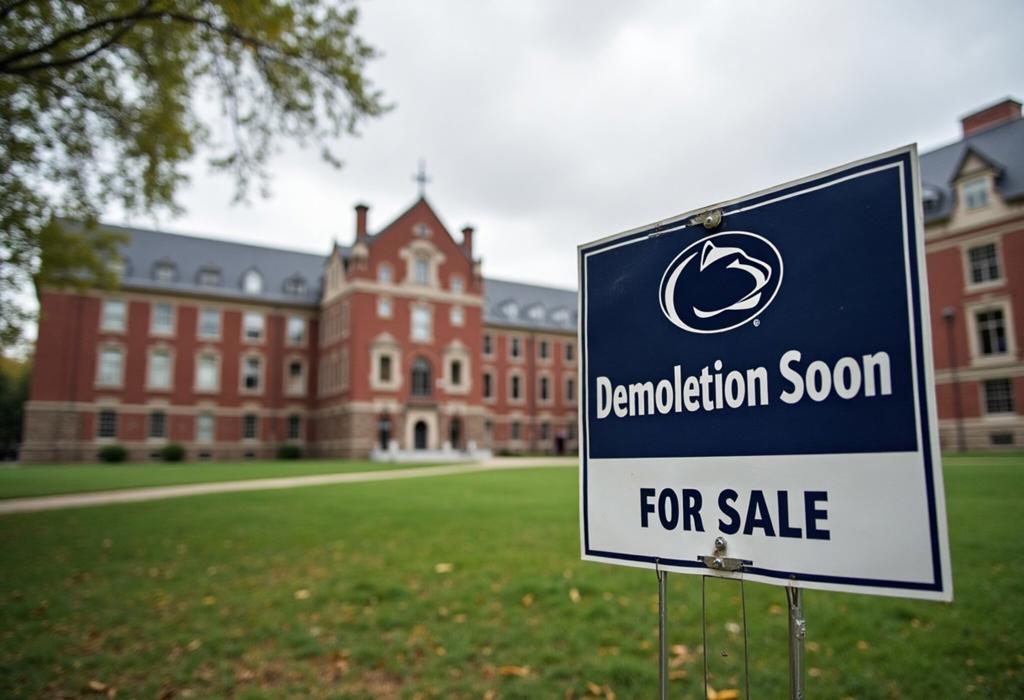Controversy Erupts Over Penn State Campus Closures and Leadership Decisions
The Penn State administration is currently facing significant backlash following a series of statements and decisions by President Neeli Bendapudi and Vice President Margo DelliCarpini, regarding the future of the university’s Commonwealth Campuses. During a Faculty Senate meeting on January 21, both administrators addressed the alarming trend of declining enrollment and announced plans to slash $54 million from the budgets for Commonwealth Campuses. This announcement raised immediate concerns about potential campus closures and faculty layoffs.
As representatives from the affected campuses expressed their apprehension and sought clarity regarding the potential cuts, they were met with evasive responses from the administration. The refusal to provide direct answers, as reported, left faculty members in a state of uncertainty and fear for their livelihoods. The situation escalated, with headlines highlighting the widespread anxiety among faculty regarding the potential for campuses to close.
What appeared to be an unprepared presentation from the administration prompted skepticism about their grasp of the implications at hand and the future of the Commonwealth Campuses. Over the following months, Bendapudi's team reportedly compiled details regarding potential closures, ultimately identifying twelve campuses whose futures seemed at stake. However, as faculty, staff, and students awaited further clarity, uncertainty loomed, exacerbating the anxiety at these campuses as they feared for their jobs.
By early May, the Board of Trustees scheduled a vote to decide which campuses might be officially recommended for closure. In an unusual move, both Bendapudi and Board Chairman David Kleppinger chose not to disclose the names of the campuses until the board had voted, raising ethical concerns about transparency in their decision-making process.
The stakes were raised when, in advance of the planned meeting, the names of seven campuses were leaked to the press, including Dubois, Fayette, Mont Alto, New Kensington, Shenango, Wilkes-Barre, and York. Instead of addressing the concerns of the faculty and staff, Bendapudi expressed regret that the community learned of the recommendations via the media, emphasizing the desire for the information to come directly from the administration.
Kleppinger’s remarks further illustrated the administration's tone-deaf approach, as he voiced frustration over the leak, framing it as a failure on the part of the individual who shared the information with the press, rather than addressing the larger issue of accountability to the academic community. The responses from the administration have many questioning the underlying ethos guiding Penn State's leadership and their responsibility to maintain transparency with the faculty and students.
Moreover, the impending lawsuit concerning the board's decision to conduct business in closed sessions has raised further questions about the board's commitment to openness, especially in light of the Pennsylvania Open Meetings Law, which mandates public discussion of significant public policy decisions. The law includes provisions for penalties against board members who fail to adhere to its requirements.
As the situation evolves, many alumni and affiliated individuals express their dismay at how the current leadership approaches its duties instead of prioritizing the well-being of students, faculty, and staff alike. In light of the turmoil, those with a vested interest in the university's future are left contemplating the direction in which Penn State is heading after years of commitment to a tradition of excellence.
In conclusion, the actions and decisions made by these leaders have not only created fear and dissatisfaction within the Penn State community but have also placed them in direct violation of their obligations to uphold transparency and encourage dialogue about significant university policies.
Bias Analysis
Key Questions About This Article




